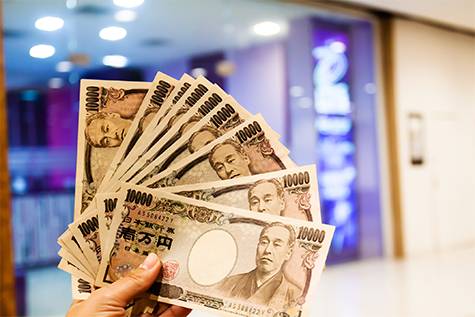The Japanese yen declined in Asian markets on Wednesday against a basket of major and minor currencies, deepening its losses for the fourth consecutive day against the US dollar and hitting its lowest level in three months. It may soon fall below the 150-yen threshold due to the continued rise in yields on US 10-year Treasury bonds.
The latest US inflation report showed signs that President Donald Trump’s tariffs have begun to affect prices, leading to reduced expectations of a US interest rate cut in September.
Despite rising expectations of a rate hike by the Bank of Japan in its meeting later this month, the market is still awaiting the release of more key economic data from Tokyo, including inflation, wages, and unemployment figures in the world’s third-largest economy.
The Price
• Japanese yen exchange rate today: The dollar rose against the yen by about 0.2% to ¥149.07 — the highest since April 3 — from today’s opening price of ¥148.83, with a low recorded at ¥148.71.
• The yen lost 0.8% against the dollar at Tuesday’s close, marking its third straight daily loss due to the US inflation data.
US Bond Yields
The yield on US 10-year Treasury bonds rose by 0.25% on Wednesday, extending gains for the fifth consecutive session, and reached a five-week high of 4.495%, which enhances the appeal of US dollar investments.
This development in the US bond market followed the release of the June US inflation report, which showed a second consecutive monthly rise in prices — the fastest pace in four months.
The Consumer Price Index rose by 2.7% year-on-year in June, up from 2.4% in May, surpassing market expectations of a 2.6% increase. This is the highest reading since February.
The rise in prices of various goods — such as coffee, audio equipment, and home furniture — contributed to the inflation uptick in June, with significant price hikes in these imported items due to Trump’s tariffs.
Following the data, and according to the CME Group’s FedWatch tool: the pricing for a 25-basis-point interest rate cut at the September meeting dropped from 62% to 55%, while the probability of rates being kept unchanged rose from 38% to 45%.
Opinions and Analysis
• Nathaniel Casey, investment strategist at Evelyn Partners, said the rise in US commodity prices could be an early sign of inflationary pressures stemming from tariffs, though it is too soon to confirm this trend.
• Casey added: While this inflation report isn’t particularly alarming, the increase in commodity prices and ongoing uncertainty over future tariff levels might make the Federal Reserve and Chairman Jerome Powell hesitant to cut interest rates.
Japanese Interest Rates
• Recently released data in Tokyo has added pressure on policymakers at the Bank of Japan.
• Amid this data, the market pricing for a 25-basis-point rate hike by the Bank of Japan at the July meeting rose from 35% to 45%.
• To reassess these expectations, investors are awaiting more data on inflation, unemployment, and wages in Japan.


